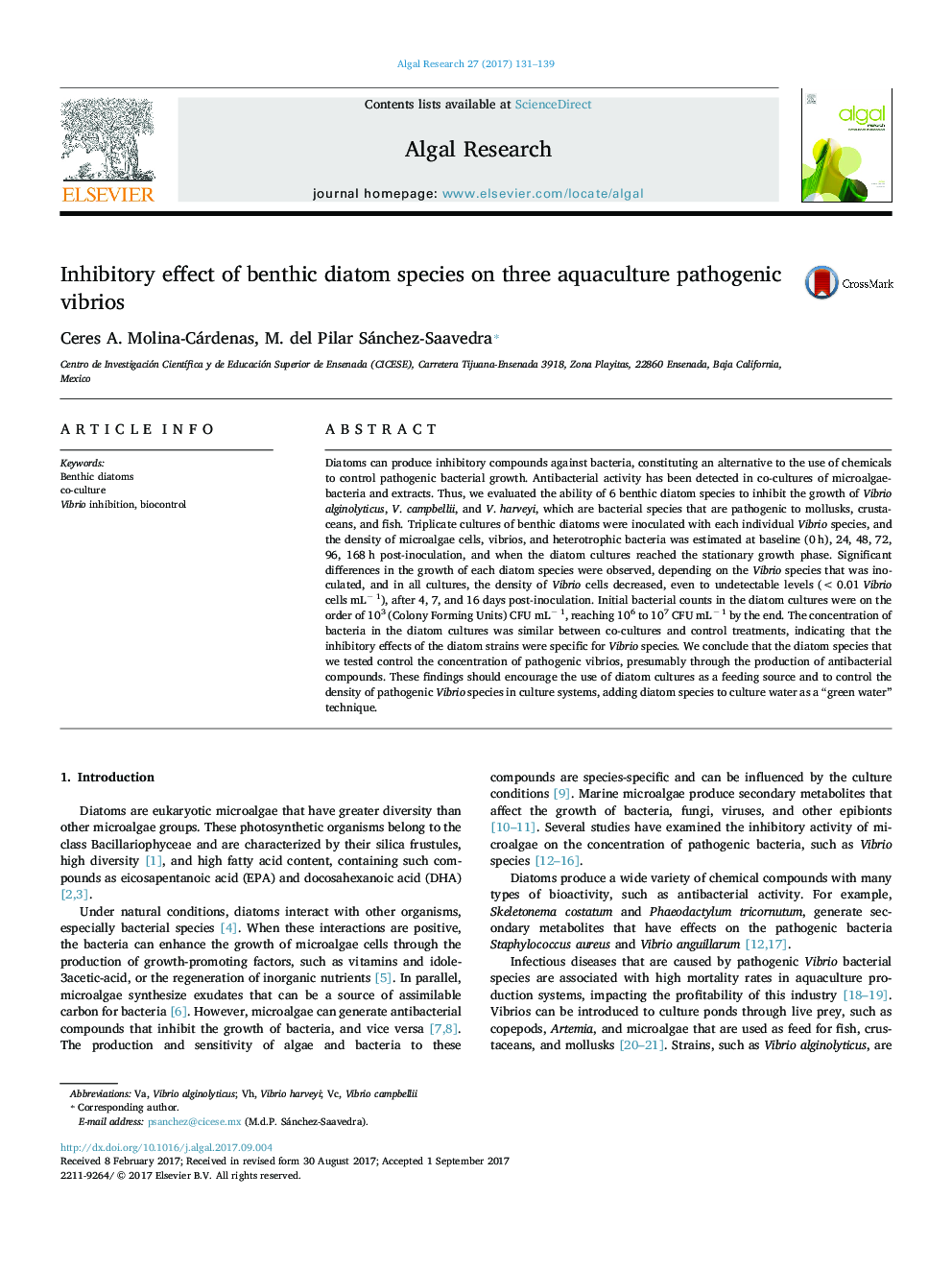| Article ID | Journal | Published Year | Pages | File Type |
|---|---|---|---|---|
| 5478535 | Algal Research | 2017 | 9 Pages |
Abstract
Diatoms can produce inhibitory compounds against bacteria, constituting an alternative to the use of chemicals to control pathogenic bacterial growth. Antibacterial activity has been detected in co-cultures of microalgae-bacteria and extracts. Thus, we evaluated the ability of 6 benthic diatom species to inhibit the growth of Vibrio alginolyticus, V. campbellii, and V. harveyi, which are bacterial species that are pathogenic to mollusks, crustaceans, and fish. Triplicate cultures of benthic diatoms were inoculated with each individual Vibrio species, and the density of microalgae cells, vibrios, and heterotrophic bacteria was estimated at baseline (0 h), 24, 48, 72, 96, 168 h post-inoculation, and when the diatom cultures reached the stationary growth phase. Significant differences in the growth of each diatom species were observed, depending on the Vibrio species that was inoculated, and in all cultures, the density of Vibrio cells decreased, even to undetectable levels (< 0.01 Vibrio cells mLâ 1), after 4, 7, and 16 days post-inoculation. Initial bacterial counts in the diatom cultures were on the order of 103 (Colony Forming Units) CFU mLâ 1, reaching 106 to 107 CFU mLâ 1 by the end. The concentration of bacteria in the diatom cultures was similar between co-cultures and control treatments, indicating that the inhibitory effects of the diatom strains were specific for Vibrio species. We conclude that the diatom species that we tested control the concentration of pathogenic vibrios, presumably through the production of antibacterial compounds. These findings should encourage the use of diatom cultures as a feeding source and to control the density of pathogenic Vibrio species in culture systems, adding diatom species to culture water as a “green water” technique.
Related Topics
Physical Sciences and Engineering
Energy
Renewable Energy, Sustainability and the Environment
Authors
Ceres A. Molina-Cárdenas, M. del Pilar Sánchez-Saavedra,
